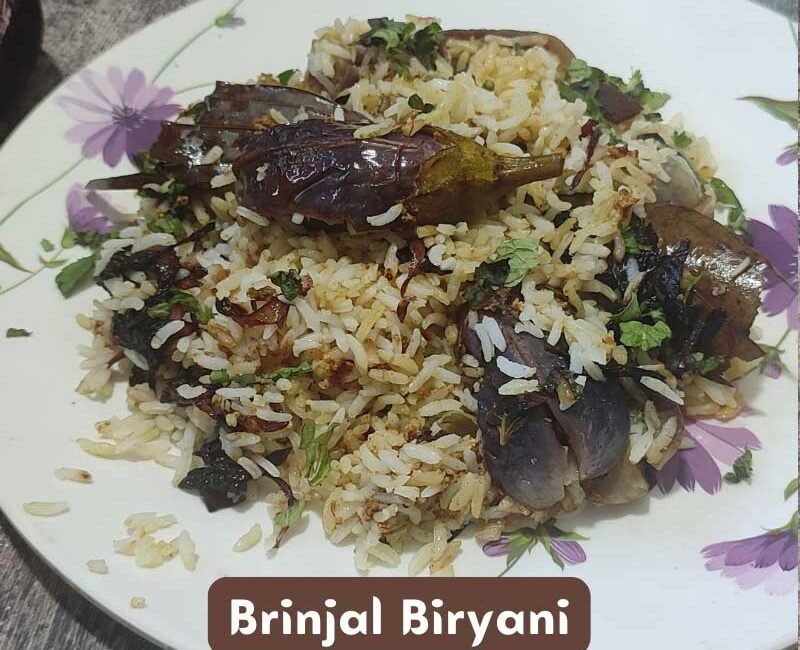
Brinjal Biryani, or Baingan Biryani, is a captivating vegetarian dish that elevates the humble eggplant to a regal status within the realm of aromatic rice preparations. This flavorful layering of tender brinjal, fragrant spices, and fluffy rice is a testament to the artistry and ingenuity of Indian vegetarian cuisine, where simple ingredients are transformed into culinary masterpieces that tantalize the senses.
At TrendyAngel Kitchen, nestled here in Mangaluru, Karnataka, we are constantly inspired by the rich tapestry of Indian culinary traditions, seeking out recipes that celebrate the natural goodness of vegetables and the time-honored techniques passed down through generations. Brinjal Biryani, with its ability to showcase the versatility of eggplant and its harmonious blend of aromas and flavors, perfectly embodies our vision of simple, healthy, and incredibly delicious vegetarian cooking.
Today, we embark on a sensory journey to explore the heart of this exquisite biryani, bypassing the specifics of a recipe and delving into its cultural significance, unique characteristics, and the emotions it evokes, especially considering the diverse regional variations that exist across India.
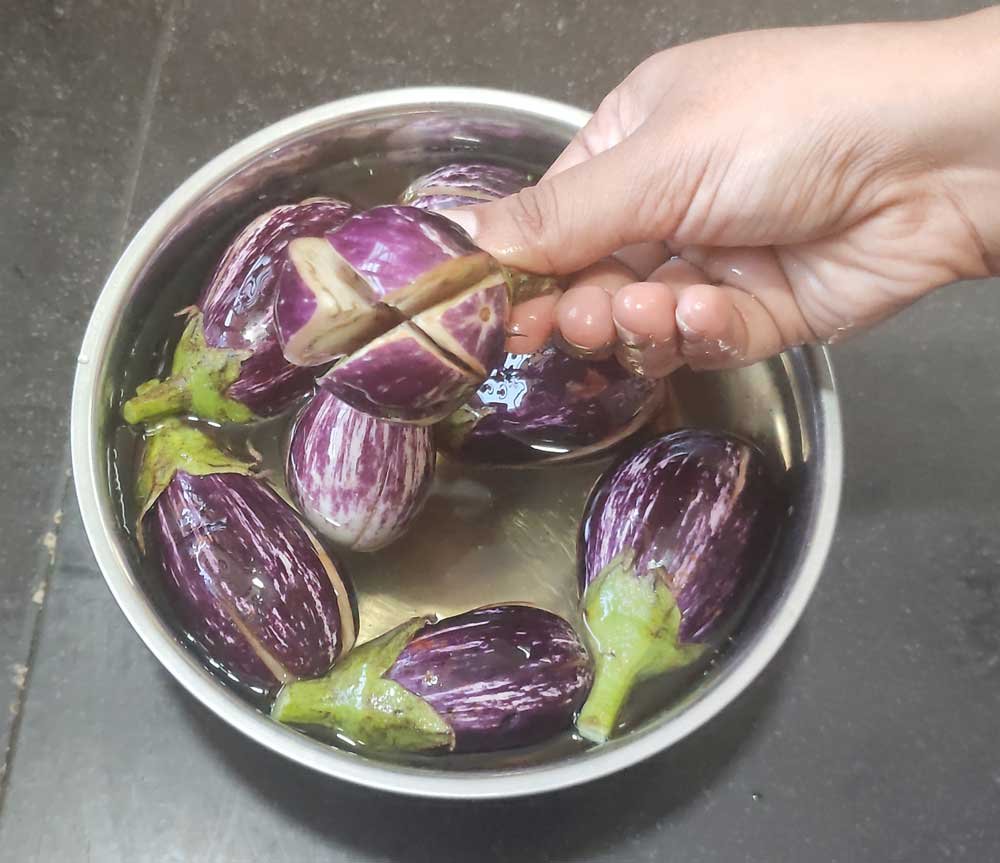
Brinjal Biryani stands as a shining example of how vegetables can take center stage in a dish traditionally associated with meat. It highlights the creativity and adaptability of Indian cooks who have masterfully incorporated a wide array of vegetables into biryani preparations, each lending its unique flavor and texture to the final creation.
This biryani is a celebration of the eggplant’s ability to absorb and meld with a symphony of spices, transforming its inherent mildness into a deeply flavorful and satisfying component of the dish. It’s a testament to the fact that vegetarian cuisine in India is far from bland, offering a vibrant and exciting array of options.
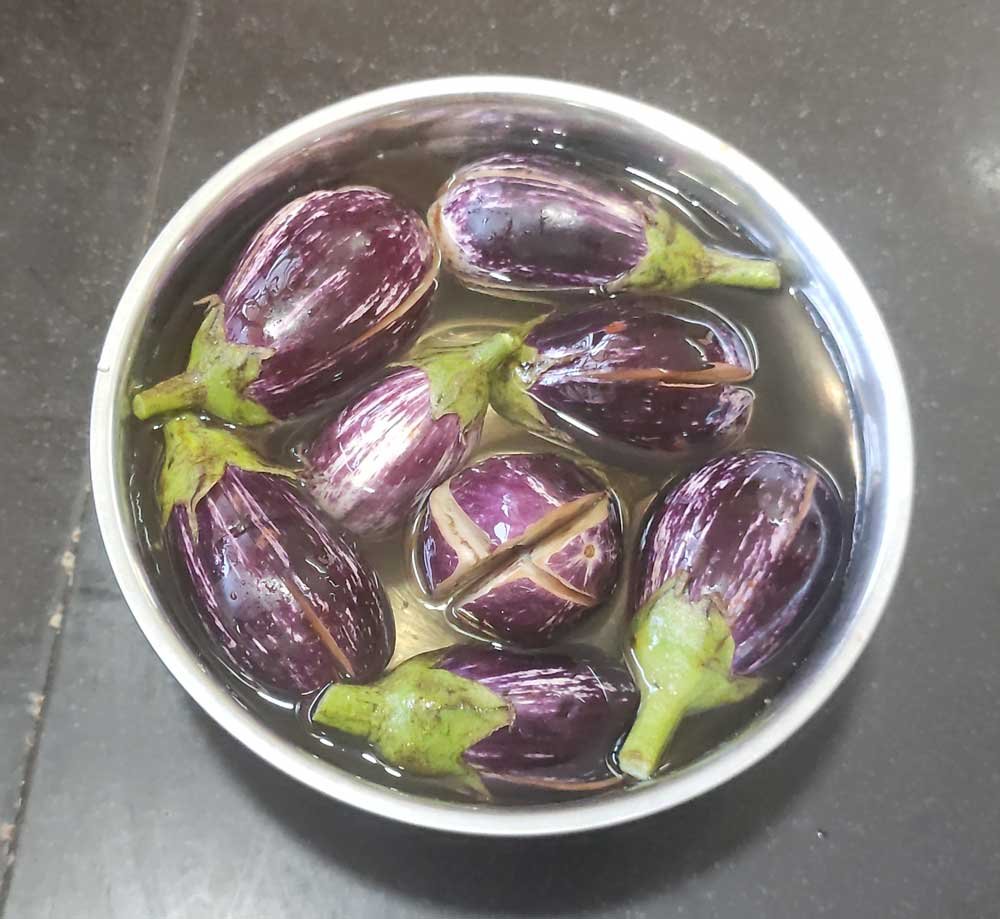
The eggplant, or brinjal, is the soul of this biryani. Its spongy texture allows it to soak up the aromatic gravy and spices it’s cooked with, becoming incredibly tender and flavorful. The choice of eggplant variety can also influence the final outcome, with smaller, more delicate Indian eggplants offering a different texture compared to larger globe eggplants.
The way the eggplant is prepared – whether cubed, sliced, or even stuffed with a spice paste – also contributes to the unique character of the biryani. Each method allows the eggplant to interact with the spices in a slightly different way, resulting in varying textures and flavor intensities.
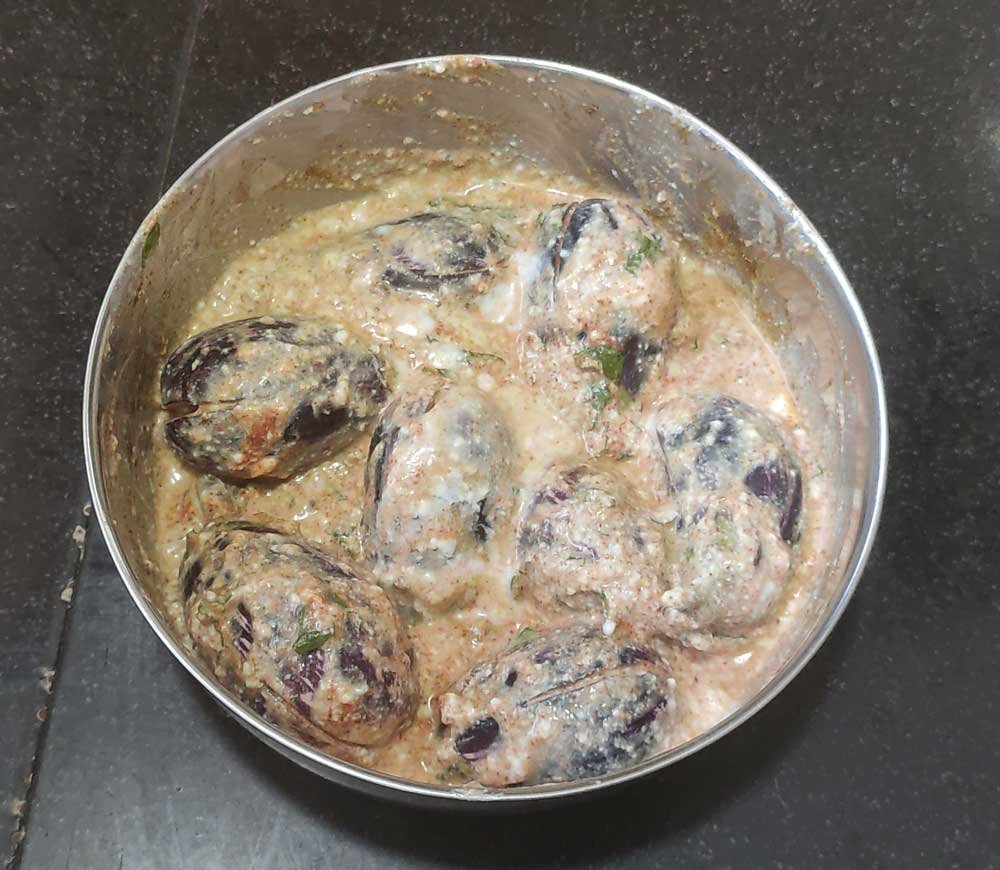
The biryani masala is the backbone of any biryani, and in the case of Brinjal Biryani, it’s the key to infusing the dish with its signature aroma and flavor. A blend of whole spices like bay leaves, cinnamon sticks, cardamom pods, cloves, and star anise forms the initial fragrant layer, often tempered in hot oil or ghee to release their potent aromas.
Ground spices such as coriander powder, cumin powder, turmeric powder, red chili powder, and the indispensable garam masala add depth and complexity to the gravy. The specific proportions and the inclusion of other regional spices are what create the distinct flavor profiles found in different versions of Brinjal Biryani across India.
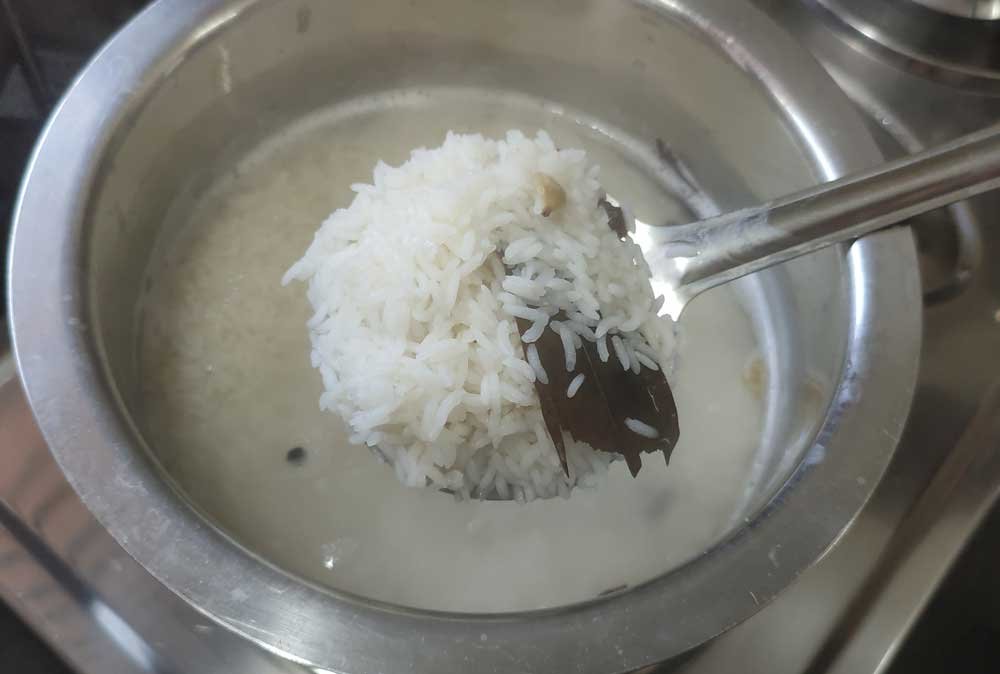
Long-grained basmati rice, with its inherent fragrance and ability to remain separate and fluffy, is the preferred choice for most biryanis, including the brinjal version. The rice is often partially cooked before being layered with the flavorful eggplant gravy, allowing it to absorb the aromas during the final steaming process.
The brinjal gravy is a rich and aromatic concoction made with onions, tomatoes, ginger-garlic paste, and the blend of biryani spices. Ingredients like yogurt or coconut milk are often incorporated to add creaminess and a subtle tang, further enhancing the complexity of the flavor profile and providing a luscious coating for the tender eggplant pieces.
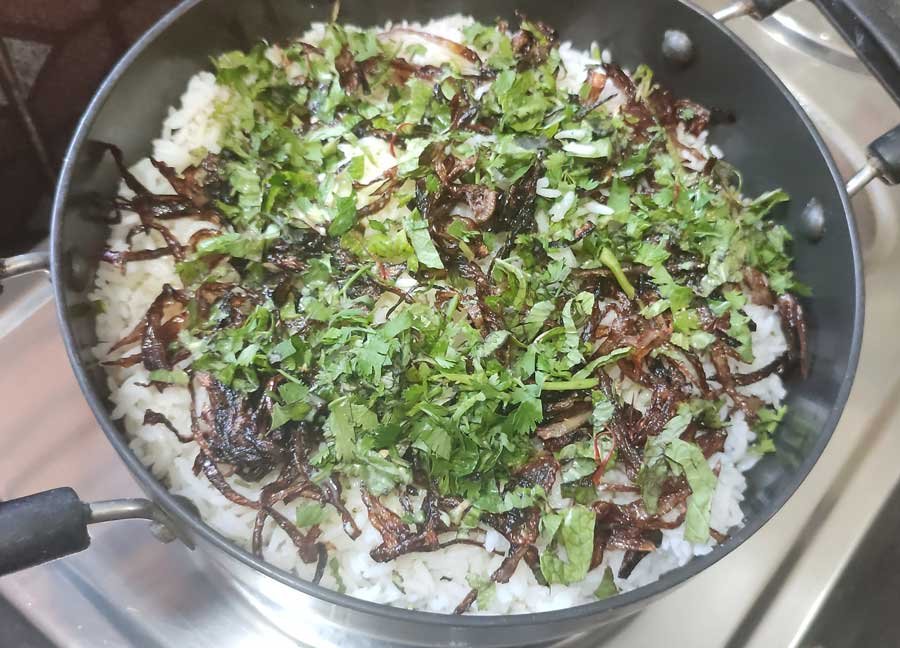
The traditional technique of “dum” cooking is essential for a truly exceptional biryani. This slow cooking method, where the pot is sealed and cooked over low heat, allows the flavors of the rice, eggplant, and spices to meld together beautifully. The steam trapped within the sealed pot gently cooks the ingredients, infusing every grain of rice and every piece of eggplant with the rich aroma of the biryani masala.
The act of sealing the pot, often with a tight-fitting lid and sometimes even a layer of dough, is a testament to the patience and care that goes into creating a truly memorable biryani.
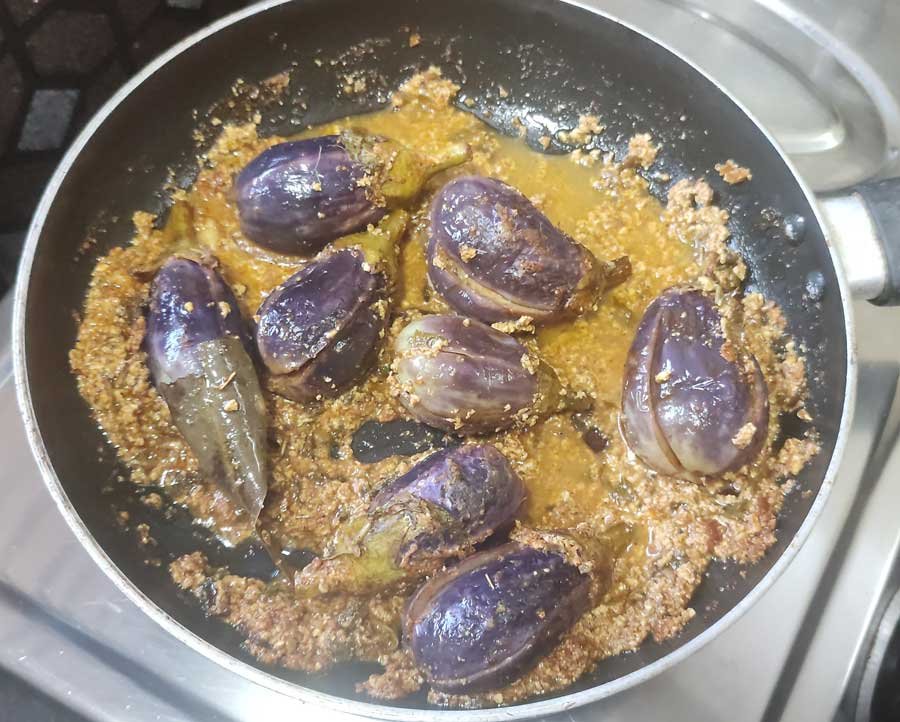
As with many beloved Indian dishes, Brinjal Biryani boasts a delightful array of regional variations, each reflecting the local culinary traditions and available ingredients:
- Hyderabadi Baingan Biryani: Often features small, whole brinjals that are stuffed with a spicy and tangy masala made with peanuts, sesame seeds, and tamarind, creating a unique and intense flavor profile.
- Lucknowi Baingan Biryani: Known for its more delicate and subtle flavors, often incorporating fragrant ingredients like rose water and saffron. The eggplant might be lightly fried to enhance its texture.
- South Indian Kathirikai Biryani: In the southern states, this biryani often includes the creamy richness of coconut milk and a blend of local spices, resulting in a distinctly different aroma and taste.
These regional adaptations highlight the versatility of the dish and the creative ways in which Indian cooks have embraced the humble eggplant.
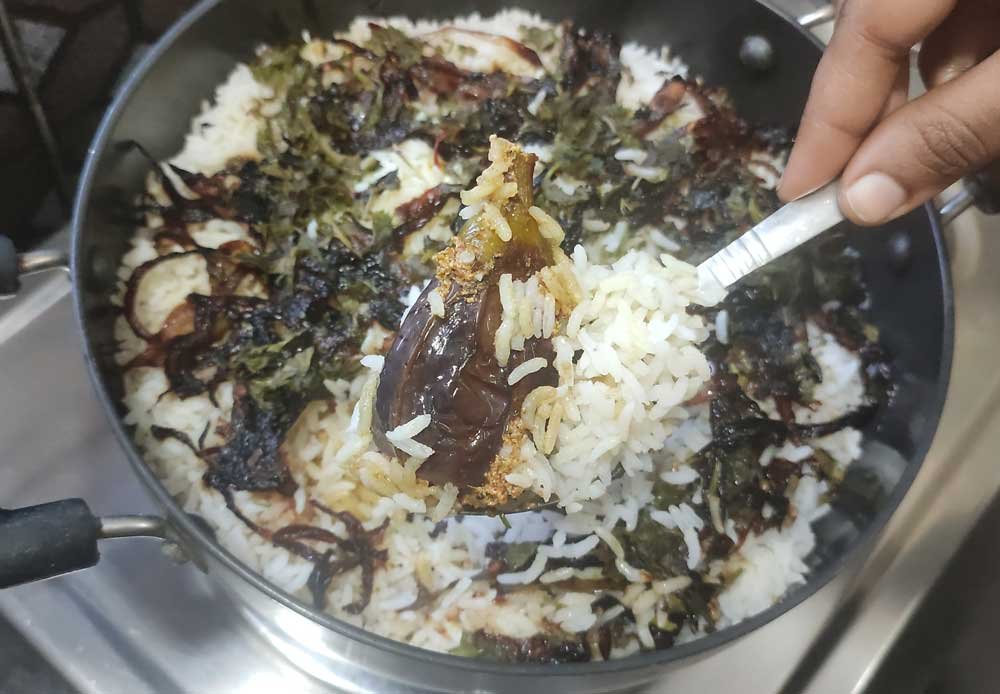
Beyond its exquisite flavor and aroma, Brinjal Biryani offers a wholesome and satisfying vegetarian meal. Eggplant is a good source of fiber and antioxidants, while the rice provides carbohydrates for energy. The array of spices not only adds flavor but also contributes various health benefits.
The inclusion of yogurt or coconut milk adds healthy fats and protein, making it a well-rounded and nourishing dish that caters to vegetarian preferences without compromising on taste or satisfaction.
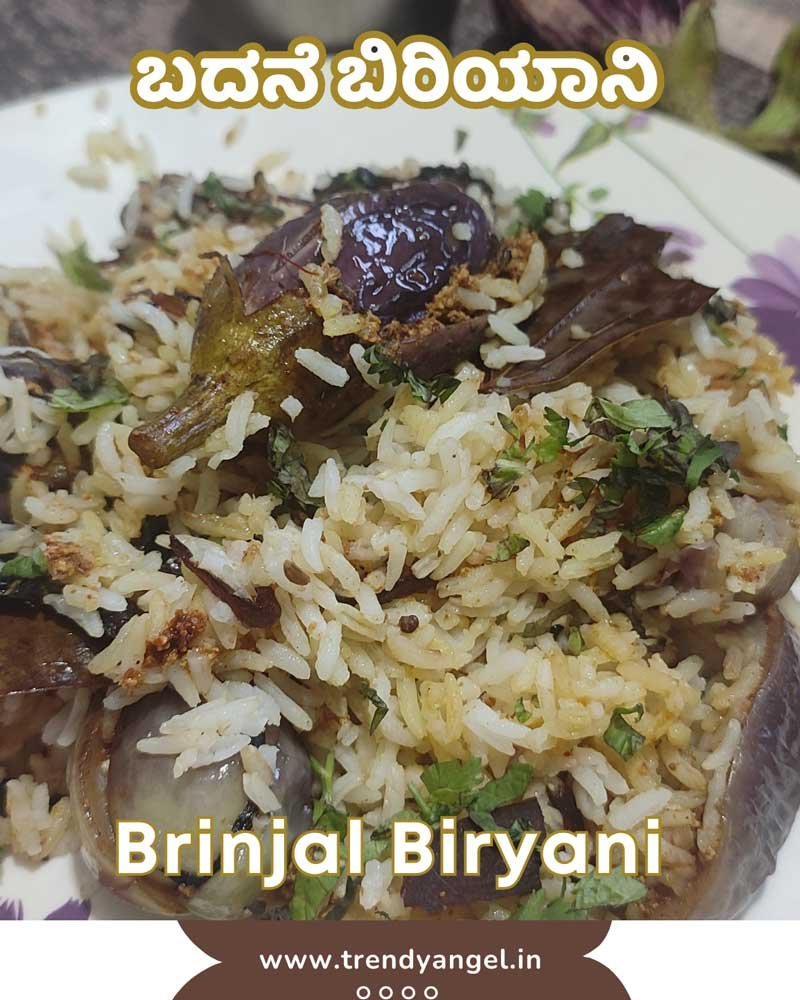
Brinjal Biryani, like all biryanis, is often a dish prepared for special occasions and gatherings, symbolizing celebration and the joy of sharing a communal meal. The act of serving and savoring this fragrant and flavorful creation with family and friends enhances the overall culinary experience, creating lasting memories around the table.
The anticipation that builds as the aroma of the biryani wafts through the air, the visual appeal of the colorful layers, and the ultimate satisfaction of the first flavorful bite are all part of the magic of Brinjal Biryani.

While we haven’t provided a specific recipe for Brinjal Biryani today, our aim is to inspire you to explore the potential of this versatile vegetable and the aromatic world of biryanis. Understand the fundamental elements – the tender eggplant, the fragrant spices, the layering with fluffy rice, and the slow infusion of flavors – and let your own culinary curiosity guide you.
The realm of Brinjal Biryani is rich and diverse, offering a multitude of flavors and textures waiting to be discovered and enjoyed.
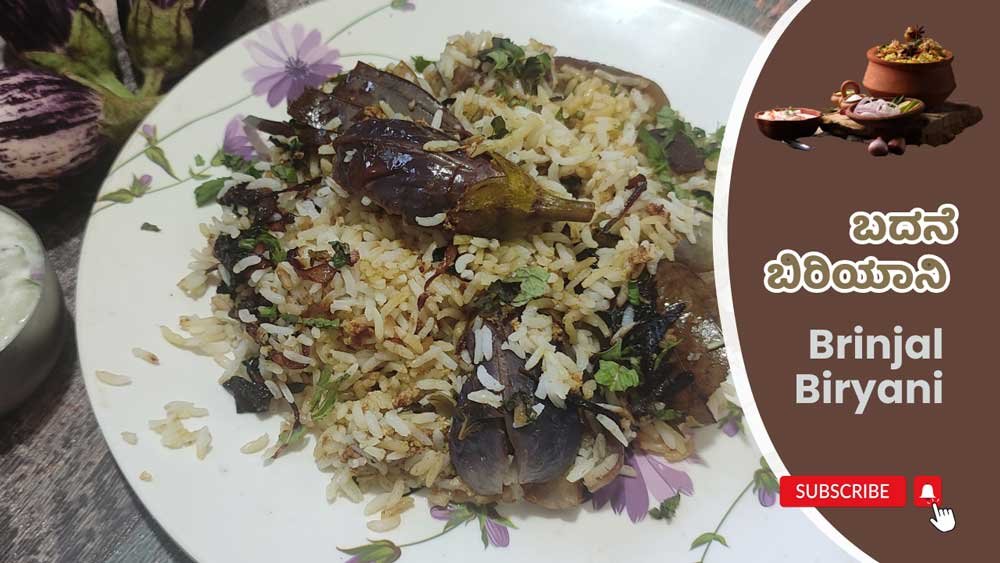
We invite you to join our growing community of food enthusiasts, right here in Mangaluru and across the globe. Subscribe to our YouTube channel, follow us on Instagram, and like us on Facebook to stay connected and explore more recipes that celebrate the beauty of vegetarian cuisine, the richness of Indian culinary traditions, and the joy of home cooking.
Like TrendyAngel Kitchen on Facebook: https://www.facebook.com/trendyangelkitchen
Follow TrendyAngel Kitchen Instagram: https://www.instagram.com/trendyangelkitchen
Like, Share & Subscribe on YouTube: https://www.youtube.com/c/TrendyAngelKitchen
All Recipes in TrendyAngel Kitchen Website: https://trendyangel.in/
Ingredients
Instructions
- Wash the brinjals and remove the stem. Depending on their size, you can either keep them whole (if very small), halve them, or cut them into quarters. If using larger brinjals, cut them into 1-inch cubes.
- In a bowl, add chopped brinjals, combine, red chili powder, turmeric powder, coriander powder, biryani powder, garam masala, yogurt, mint leaves and salt.
- Add the brinjals to the marinade and mix well, ensuring that the brinjals are evenly coated.
- Let the brinjals marinate for at least 20-30 minutes.
- Wash the basmati rice thoroughly under cold running water until the water runs clear. This removes excess starch and prevents the rice from becoming sticky.
- Soak the rice in enough water for at least 30 minutes. Soaking helps the rice cook evenly and become fluffier.
- In a vessel add water and bring to boil.
- Add salt, bay leaf, cinnamon stick, green cardamom pods, pepper, and cloves. Sauté for a minute until fragrant.
- Add the drained rice and sauté gently for another minute.
- Bring the water to a boil, then reduce the heat to low, cover the pot tightly, and let the rice cook until all the water is absorbed and the rice is cooked through (about 12-15 minutes).
- Once cooked, fluff the rice gently with a fork and set aside.
- Heat oil in a pan or pot over medium heat.
- To a pan add bay leaf, star anise, clove, cardamom, fennel seeds, ginger garlic paste and saute about 2-3 minutes.
- Add the marinated brinjals and sauté them until they are slightly browned and about half-cooked. You don't want them to be fully cooked at this stage as they will cook further in the biryani.
- Remove the sautéed brinjals from the pan and set aside.
- Now it's time to layer the biryani. Heat the ghee in the pot.
- Add the brinjal gravy to a separate heavy-bottomed pot, start with a layer of the cooked rice. Spread it evenly.
- Sprinkle some fried onions, chopped mint, and coriander leaves over the gravy.
- Add a handful of mint leaves and coriander leaves.
- Pour the saffron-soaked milk (if using) over the top layer of rice.
- Cover the pot tightly with a lid. To create a "dum" effect, you can seal the edges of the lid with dough or place a heavy object on top to prevent steam from escaping.
- Cook the biryani on very low heat for 15-20 minutes. This allows the flavors to meld together beautifully. You can also place a flat griddle (tava) under the pot to prevent the bottom from scorching.
- Once the biryani is cooked, turn off the heat and let it rest for 5-10 minutes with the lid still on. This allows the flavors to settle.
- Gently fluff the biryani with a fork before serving. Be careful not to mash the brinjals.
- Serve hot with raita (yogurt dip).
